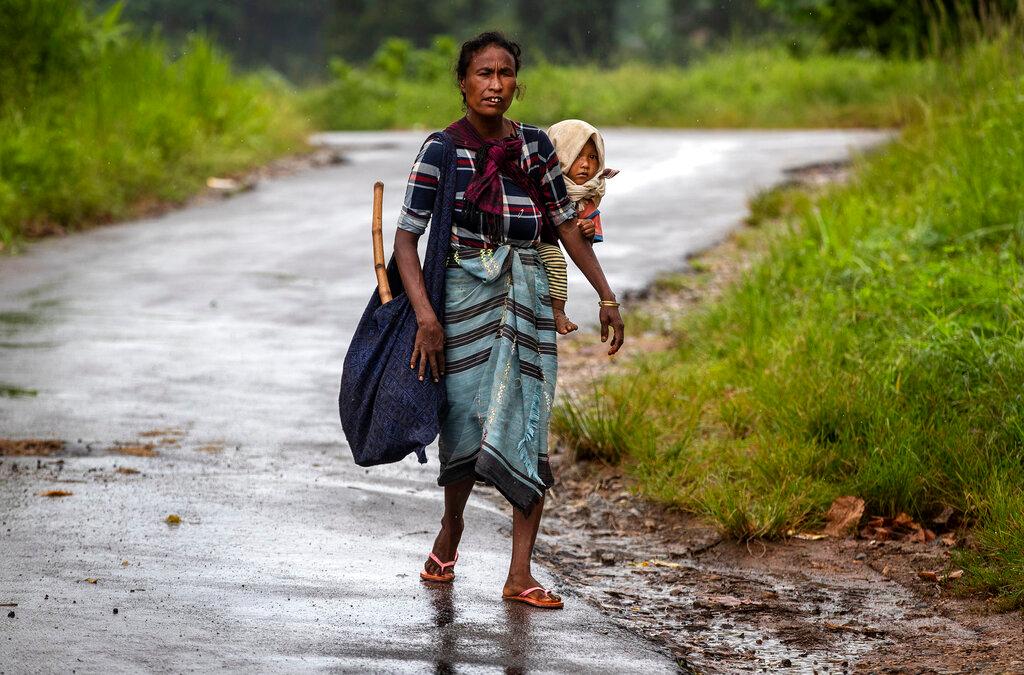Water-poor Indians turn to apps in dry season
Nearly 600 million people in India are facing 'high to extreme water stress', according to a government think tank.
Just In
Before Riki Emiyo scrolls through social media, he checks his smartphone for progess on water conservation projects – less fun, but of far more use as winter descends on his parched Indian village.
“Every year, when the monsoon rain stops, all the water disappears,” said Emiyo from Kairang village in the Jaintia hills of Meghalaya state in northeast India.
“So every day in winter, people travel a few kilometres to fill cans of water to see them through the dry winter months. We simply do not have water storage facilities and were clueless till the app simplified things for us.”
The app is Clart. First launched in 2014, the updated app now helps thousands of water-poor Indians like Emiyo take greater charge of conservation close to home.
Free and open source, it has enabled rural communities in 19 states across India to design measures that help recharge ground water or augment the amount of usable surface water.
India is one of 17 countries facing extremely high water stress, according to a 2019 report by the World Resources Institute.
With a growing population, rising demand from farming and industry, and increasingly erratic monsoon rains, nearly 600 million people face “high to extreme water stress”, according to government think tank Niti Aayog.
Data shows groundwater is used faster than it is replenished in most parts of India – a formula known as “recharge” whether the water is topped up by nature or design.
“Recharge is a function of many things and it is essential that conservation methods are driven by science,” said Vimal Mishra, associate professor at the Water and Climate Lab in the Indian Institute of Technology in Gandhinagar.
“Technology can help to identify the best sites to create structures that will help store water and recharge. Building a pond or a check dam just anywhere will not work.”
Recharge
Government data from last year shows more than 60% of monitored wells had registered a drop in groundwater levels.
Less rain, more farming, greater pollution from mining and mass urbanisation were all to blame, according to researchers.
Climate change has also altered rain patterns in Amravati in the western state of Maharashtra, meaning tankers now deliver drinking water and farmers rely on Clart for water management for irrigation.
“Erratic rainfall has directly impacted their farming,” said Vivek Deshmukh of the charity CottonConnect, which encourages farmers to try their hand at sustainable farming.
“Amravati is known for cotton and oranges and in both cases, change in rainfall patterns due to climate change has meant losses for farmers. They need better sources of water and the app is helping create that infrastructure.”
Across 1,200 villages in the district, the app helps farmers plan the best ways to recharge their groundwater and top sites for ponds, dams, tanks and water harvesting.
Clart lets locals take charge, whatever their circumstances.
“The app works both online and offline and is colour-coded, making it user friendly for semi-literate village communities,” said Chiranjit Guha of non-profit Foundation for Ecological Security, which developed the app. “The idea is to support local knowledge with technical input.”
Changemakers
Wankit Kupar Swer, general manager of the Meghalaya Basin Management Agency, is spearheading efforts to help villagers like Emiyo manage the shortages yet live sustainably.
“Meghalaya is perceived as a state with beautiful forests and plenty of rain,” Swer said.
“But the sad reality is that we now have only 3% of dense forests, reduced months of rainfall, increased flash floods and mining that has affected water quality downstream, far away from the actual mining site.”
Emiyo’s village has faced water shortage for about a decade but is only now grasping at solutions, in part due to Clart and the autonomy it offers.
“Clart is for the first time helping communities make intelligent decisions without waiting for engineers to come and assess their needs,” Swer told the Thomson Reuters Foundation.
“A person just has to go to a location, turn on the app and it tells them what can be done and what cannot on that terrain. It has decentralised the decision making, which is key to the success of these projects.”
For Emiyo, taking charge has bred resilience.
“We are feeling more confident with our ideas and also are able to question engineers who work with us,” he said. “Many people in my village are more clued into the problem now and willing to work together to find the solution.”
Subscribe to our newsletter
To be updated with all the latest news and analyses daily.
